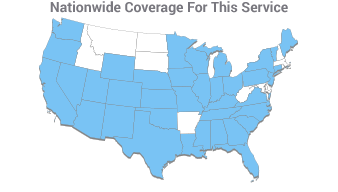- Home
- Services/IndustriesServicesindustries
- About Us
- LocationsStatesAccordion ContentAccordion ContentAccordion ContentAccordion Content
- Job Openings
- Quick Links
- ATS Family

Vacuum Box Testing
Applied Technical Services is an industry leader in vacuum box testing services. Our qualified technicians in our ISO 9001 compliant laboratories are ready to provide reliable solutions for your leak testing needs. We are capable of locating leaks in pressure vessels, piping, storage tanks or any of your other critical sealed components that may be in underwater or outdoor applications.
The objective of the vacuum box technique of bubble leak test is to locate leaks in a pressure boundary that cannot be directly pressurized. This is accomplished by applying a solution to a local area of the pressure boundary surface and creating a differential pressure across that local area of the boundary causing the formation of bubbles as leakage gas passes through the solution. This testing helps companies save costs associated with lost time and production incurred from repairing leaks after startup.
How the Method Works
Vacuum box testing provides for the detection of through-thickness leaks and is most commonly used for testing welds. Cracks, pores, and lack of fusion are typical causes of leaks detectable by this method. A bubble-forming solution is applied to the surface to be tested by flowing, spraying, or brushing the solution over the examination area. Household soap or detergents designed specifically for cleaning are not permitted as substitutes for bubble-forming solutions. A commercial leak detection solution is used that is compatible with the temperature conditions during the test. As a standard technique, the temperature of the surface of the part to be examined should not be below 40°F (5°C) nor above 125°F (50°C) throughout the examination.
A vacuum box with a viewing window large enough to view the complete area and to allow sufficient light to enter the box for proper examination is then placed over the surface. The box, which by means of its construction and a suitable gasket, being capable of producing and holding a pressure differential of at least 8 psi, is then evacuated. A calibrated gauge is placed in the system to verify the required pressure differential to detect vacuum seal or other types of leaks in the equipment. The area is then viewed for evidence of through-thickness leaks by the formation of bubbles on the surface.
Applicable Testing Standards
ATS experts undergo exhaustive training over the techniques and procedures of the test methods required for accurate vacuum box testing. Our methods are in accordance with the following industry standards:
- ASNT, Handbook Volume 1 — Leak Testing
- ASME BPVC Section V

Request Form
"*" indicates required fields
Special Testing
- Hydrostatic Leak Testing
- Hydrostatic Pressure Testing
- Hydrostatic Testing
- Hydro Testing
- Leak Testing
- Load Testing
- Package Burst Testing
- Pipeline Hydro Testing
- Pipeline Hydrostatic Testing
- Pressure Cyclic Testing
- Pressure Decay Leak Testing
- Pressure Fatigue Resistance Test
- Pressure Fatigue Testing
- Pressure Leak Testing
